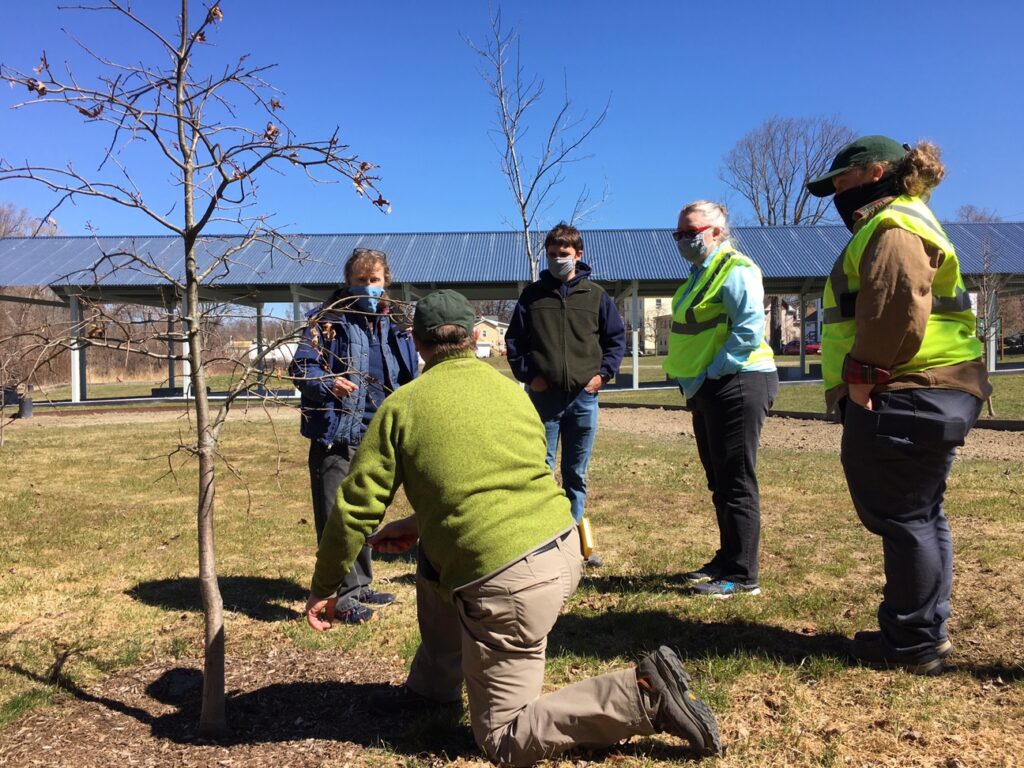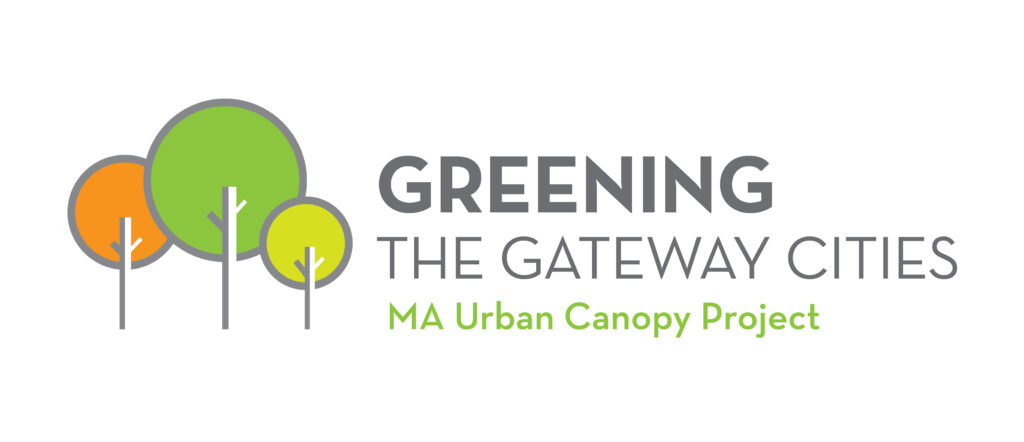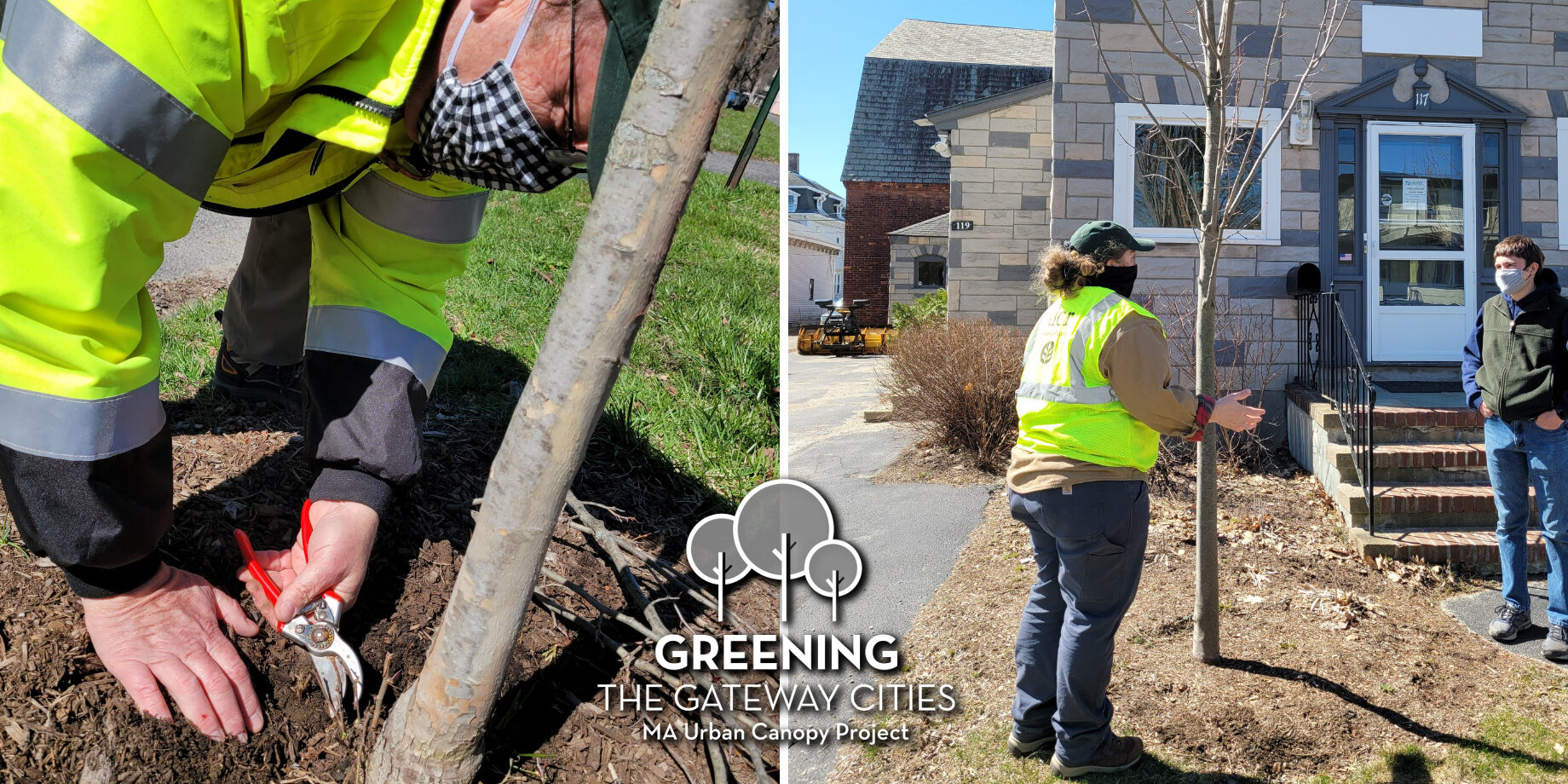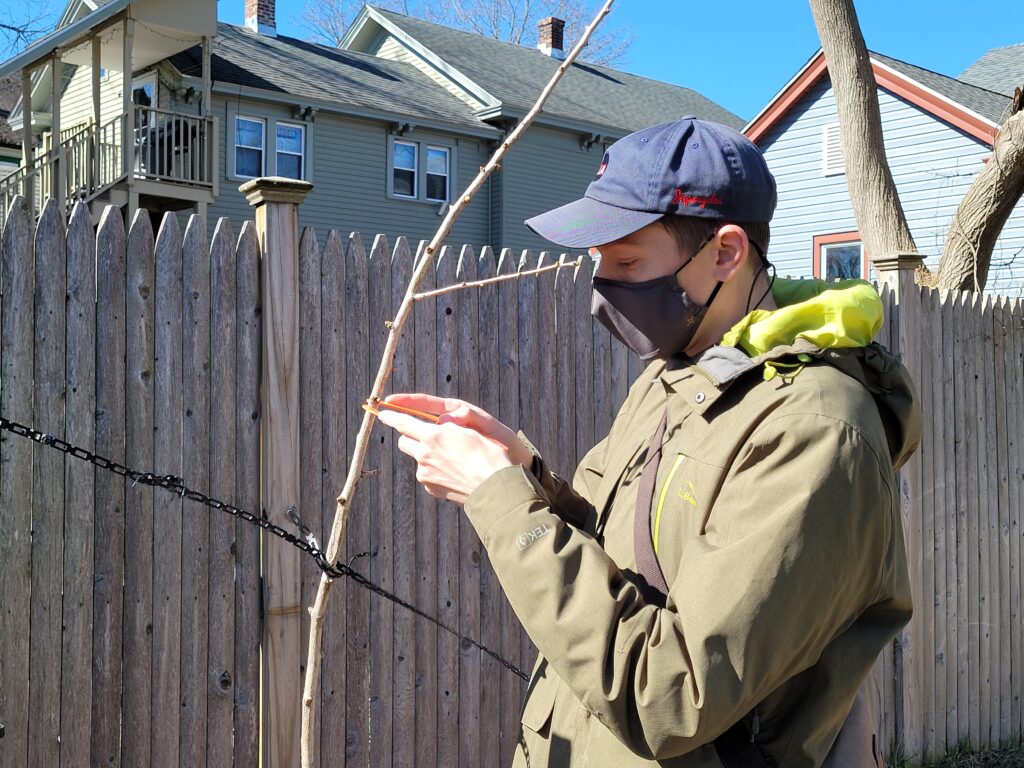Pittsfield’s Greening the Gateway Cities Program Explained
Downtown Pittsfield, Inc. has partnered with the Berkshire Environmental Action Team to promote the Greening the Gateway Cities Program (GGCP) as it enters its final year of tree planting in Pittsfield. The two organizations will work together to evaluate tree health, build awareness of what is needed to keep trees healthy, and build capacity downtown and in adjacent neighborhoods that enables residents to care for their trees.
The Greening the Gateway Cities Program (GGCP) was “created with a goal to increase the number of trees planted in urban residential areas of the Massachusetts Gateway Cities. Through the GGCP program, free trees (ranging from 6ft to 10ft tall) are planted with a goal of covering 5% of target neighborhoods in new tree canopy cover. The trees are planted by foresters from the Department of Conservation & Recreation (DCR) Urban & Community Forestry Program, with crews hired from local communities.” “Residents and business owners can order free trees to be planted on their properties by agreeing to a two-year watering commitment, to ensure the trees’ survival. When a potential tree recipient signs up, a DCR forester will visit their home to determine the best location and species of tree for energy efficiency. Foresters also conduct year-round site visits and are available to answer questions.” (maurbancanopy.org)
The Berkshire Environmental Action Team (BEAT) was the GGCP’s first community partner in Pittsfield. “The state approached BEAT about 5 years ago and asked us if we would be the community partner in GGCP for the planting of the trees”, says Jane Winn, Founding Executive Director of BEAT. “We’ve been helping get the word out about free trees professionally planted for free for about 5 years leading up to this. We also have had volunteers who’ve done a ton of watering of the trees in the public housing areas and other public places. And then this year, we’re partnering with Downtown Pittsfield, Inc., and this has just been fantastic as they’re taking on a lot of the work of taking care of the trees.”
2892 trees have been planted to date in the city of Pittsfield since 2016 as part of the Greening the Gateway Cities Program. According to Jay Girard, Certified Arborist and MA DCR’s urban forester for the Pittsfield GGCP, the goal is to reach 3000 trees. “We have 60-70 trees sited already in Pittsfield so we will meet that goal quite nicely. There are still opportunities to get a tree but act quickly. Go to www.maurbancanopy.org and if in the planting area, call and the urban foresters will schedule a site visit.”

“The GGCP targets the parts of the city with lower tree canopy, older housing stock, higher wind speeds, and larger renter populations. In addition, plantings are concentrated in Environmental Justice neighborhoods, to benefit those most in need.” “In Massachusetts, a neighborhood is defined as an Environmental Justice population if any of the following are true:
- Block group whose annual median household income is equal to or less than 65 percent of the statewide median; or
- 25% or more of the residents identify as a race other than white; or
- 25% or more of households have no one over the age of 14 who speaks English only or very well – English Isolation.” (mass.gov)
“The guiding principle of environmental justice is that everyone, regardless of race, color, national origin or income is entitled to equal protection from environmental harms and risks.” (epa.gov) The GGCP is guided by this principle when developing planting zones in the Gateway Cities*.
*Gateway Cities as defined by Section 3A of Chapter 23A of the General Laws of Massachusetts “have a population between 35,000 and 250,000, with an average household income below the state average, and an average educational attainment rate (bachelor’s degree or above) below the state average.”
“For generations, Gateway Cities were home to industry that offered residents good jobs and a “gateway” to the American Dream. Over the past several decades, manufacturing jobs slowly disappeared”, and the communities were faced with stubborn social and economic challenges as a result. Click here to learn more about Gateway Cities.
There are many environmental benefits to increasing neighborhood level tree canopy cover. An increase in tree canopy cover reduces household heating and cooling energy use. Even trees up to 1,500 feet away from a home can still significantly lower surface temperatures. “Program goals are to plant 5 trees per acre, which will reduce the Urban Heat Island effect, and decrease summer air temperatures in city neighborhoods by shading and increased transpiration (the process in which plants absorb water through the roots and then give off water vapor through the pores in their leaves). Additionally, in the winter months, mature tree trunks and branches help to randomize wind patterns and decrease heat loss by air infiltration in poorly insulated homes…. Planting this number of trees will increase canopy by an estimated 1% in eight years and 5% in 30 years. Return on investment is realized as soon as 15 years, after which additional energy savings are realized for the life of the trees.” (maurbancanopy.org)
Other environmental benefits of new trees are the creation of new habitats, cleaner air, noise reduction, and the minimalizing of flooding and erosion.
There are non-environmental benefits as well, such as increased property values, a slowing down of motorists, community pride, and a reduction in crime. Plus, a creation of tree-related jobs and volunteer opportunities.
One example of this is the creation of the “Tree Ambassador”, a paid position that will conduct outreach to downtown Pittsfield businesses, residents, and neighborhoods to provide information on planted trees and tree care. The Downtown Pittsfield Tree Ambassador Program is a partnership between Downtown Pittsfield, Inc., the Berkshire Environmental Action Team, and the City of Pittsfield Police Department.
The Tree Ambassadors will engage directly with residents and business owners to share materials on the Massachusetts GGCP and will report tree care requests. They will also install “Tree-Via” ornaments that have been designed by BEAT to illustrate interesting facts and benefits of urban trees.
“I think the goal is to have not only have our organizations but everybody in Pittsfield care about trees and be good stewards of these trees,” say Winn. “I was really shocked; I was on a webinar with national street tree planting groups, and they were saying ‘yeah, street trees – they last 7 years’ and we were thinking ‘no no no no no, we want our trees to be able to live their full lifetime!’ So, I think one of the major goals (of this program and partnership) is to make sure that these trees really get to live 70, 100 years or more and provide all the benefits that trees provide.”
A study of trees planted in Huntington Park, an under-resourced city in Los Angeles County, California, found that trees where active outreach efforts were conducted had “higher soil moisture, more mulch, and better observed health” than trees where passive or no outreach occurred. BEAT and DPI hope that the active, direct engagement with community members by Tree Ambassadors will increase care for the GGCP trees by helping to foster new and better habits for tree owners and community members. Click here to view the Tree Care Guide created by the MA DCR which covers how to water, mulch, protect, and maintain newly planted trees.
BEAT and DPI are also looking for volunteers to serve as Certified Tree Stewards. “The job is going out and measuring the DBH (diameter at breast height), the height of the tree, the health of the tree, all that sort of thing, and the best way to volunteer is to contact Downtown Pittsfield, Inc.,” says Winn. Soil moisture will also be measured, and observations will be made about weeds, trash, mulch, pests, and “stress” (wilt and peeling or cracked bark).
The data collected will form the basis of an Annual Pittsfield Tree Health Check-Up: an overall report of tree condition including neighborhood and street-level reports on tree health of trees planted as part of the GGCP. Anyone interested in volunteering to serve as a Certified Tree Steward should email info@downtownpittsfield.com with “Tree Steward” in the subject line.
The Pittsfield Greening the Gateway Cities Program has numerous individuals and organizations working together to bring the 3000th tree to Pittsfield this spring and to sustain all of these trees into the future for future generations. Learn more about some of these organizations below.
Downtown Pittsfield, Inc. interviewed Jay Girard, Certified Arborist and MA DCR’s urban forester, for this blog piece, but he gave us so much useful and interesting information, we decided to create a second, separate blog piece which can be viewed here: downtownpittsfield.com/2021/04/an-interview-with-jay-girard-certified-arborist-for-the-pittsfield-ggcp/
Blog by Kimberly Gritman, Downtown Pittsfield, Inc.



